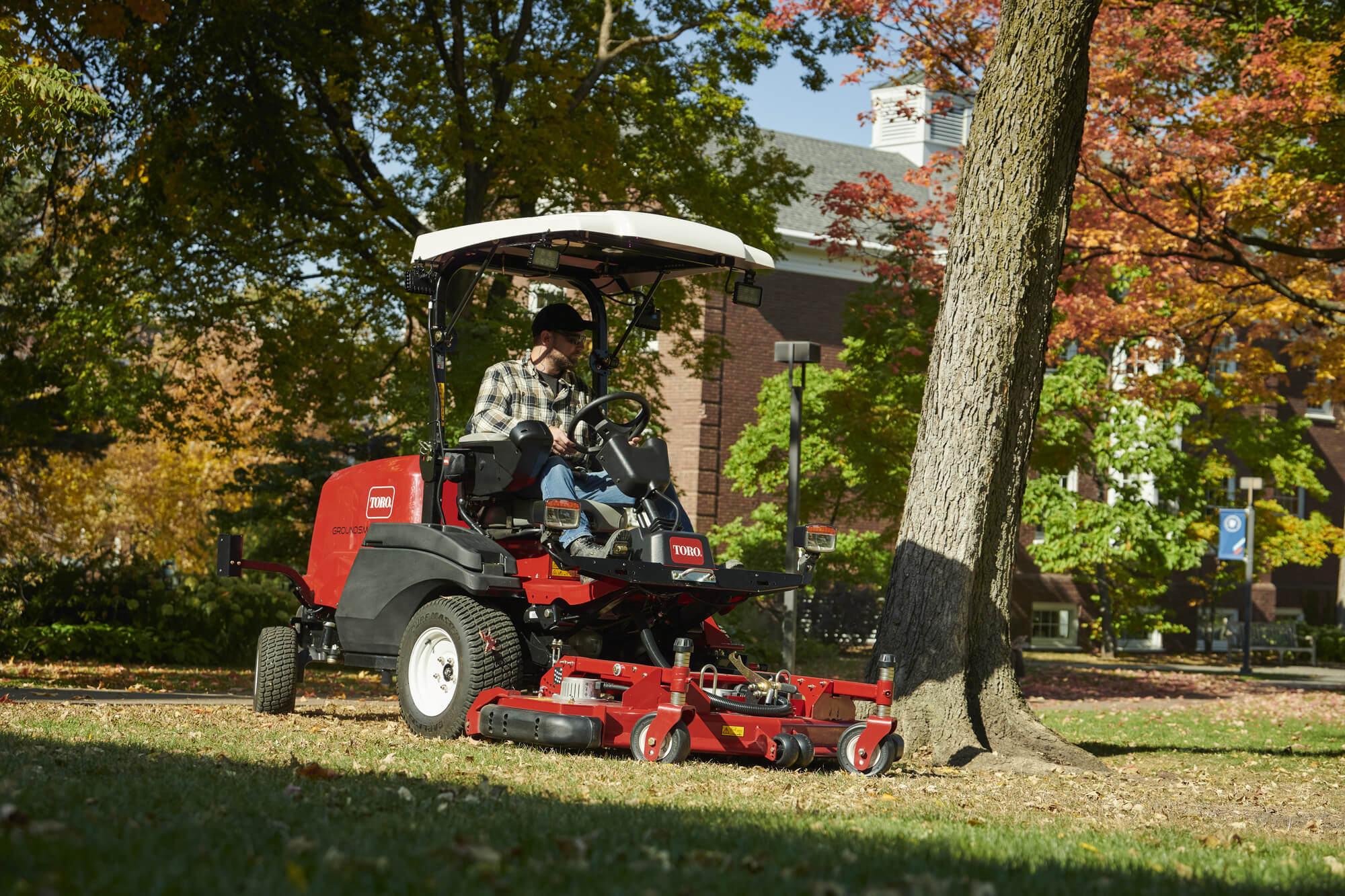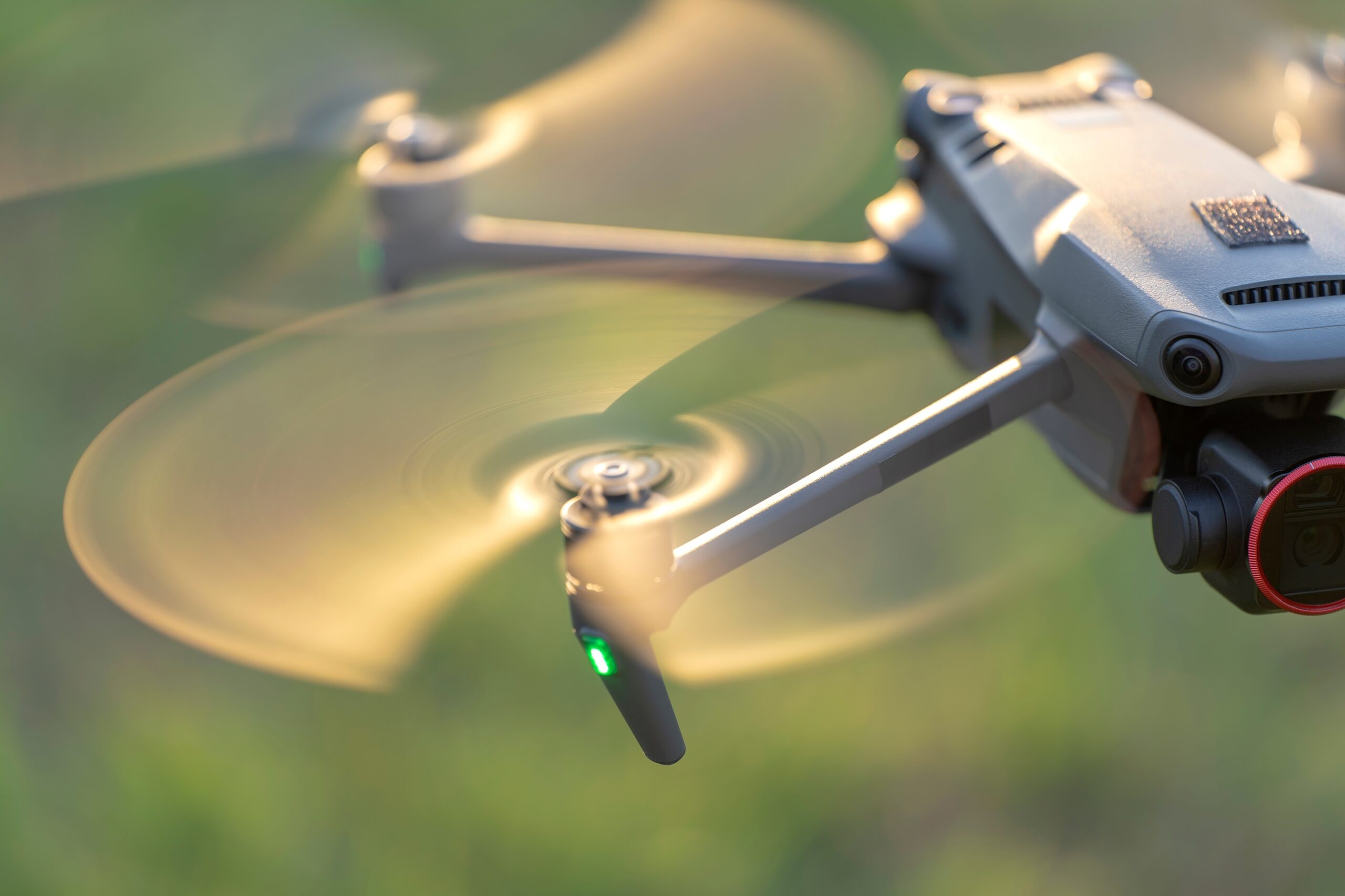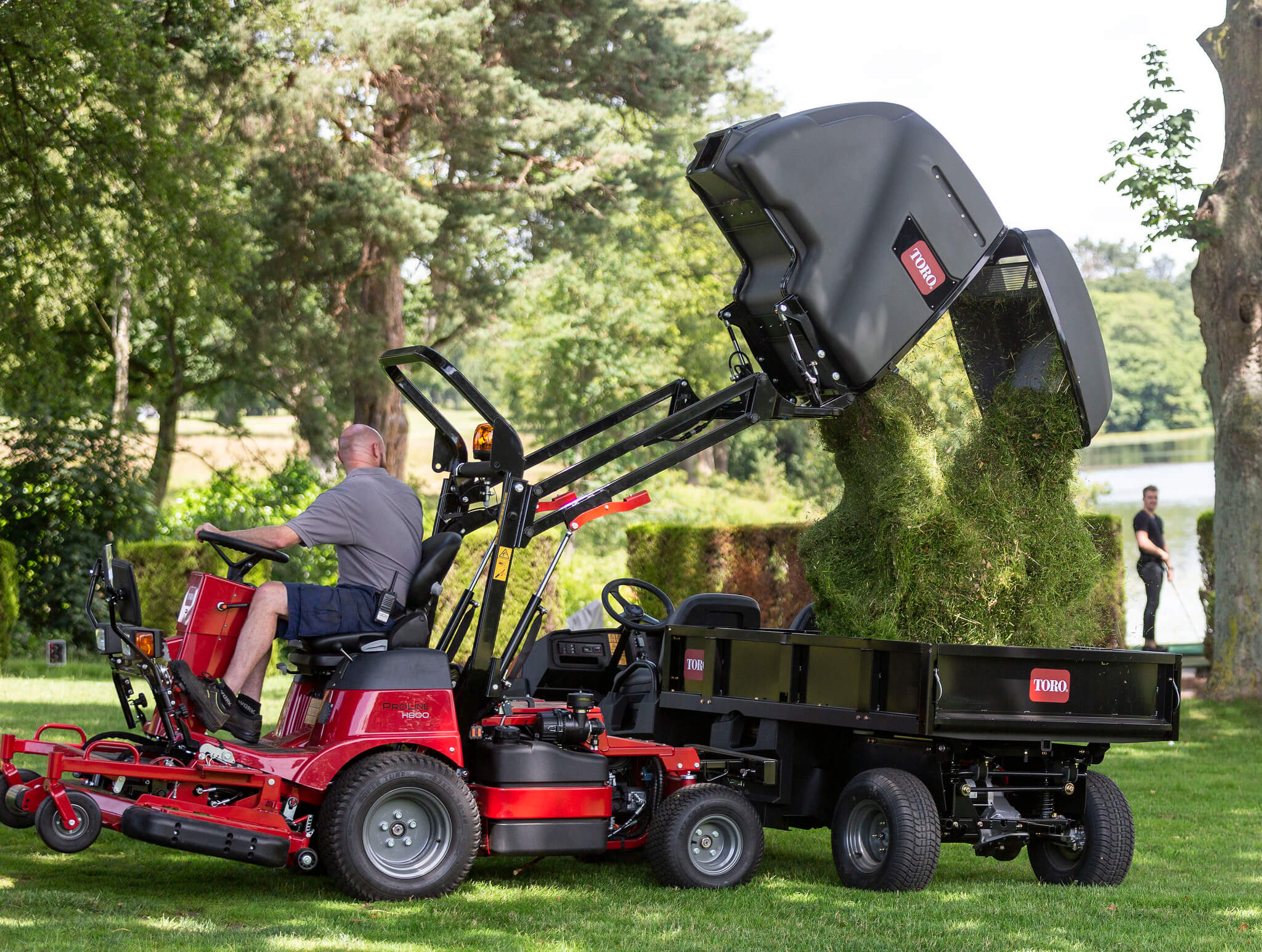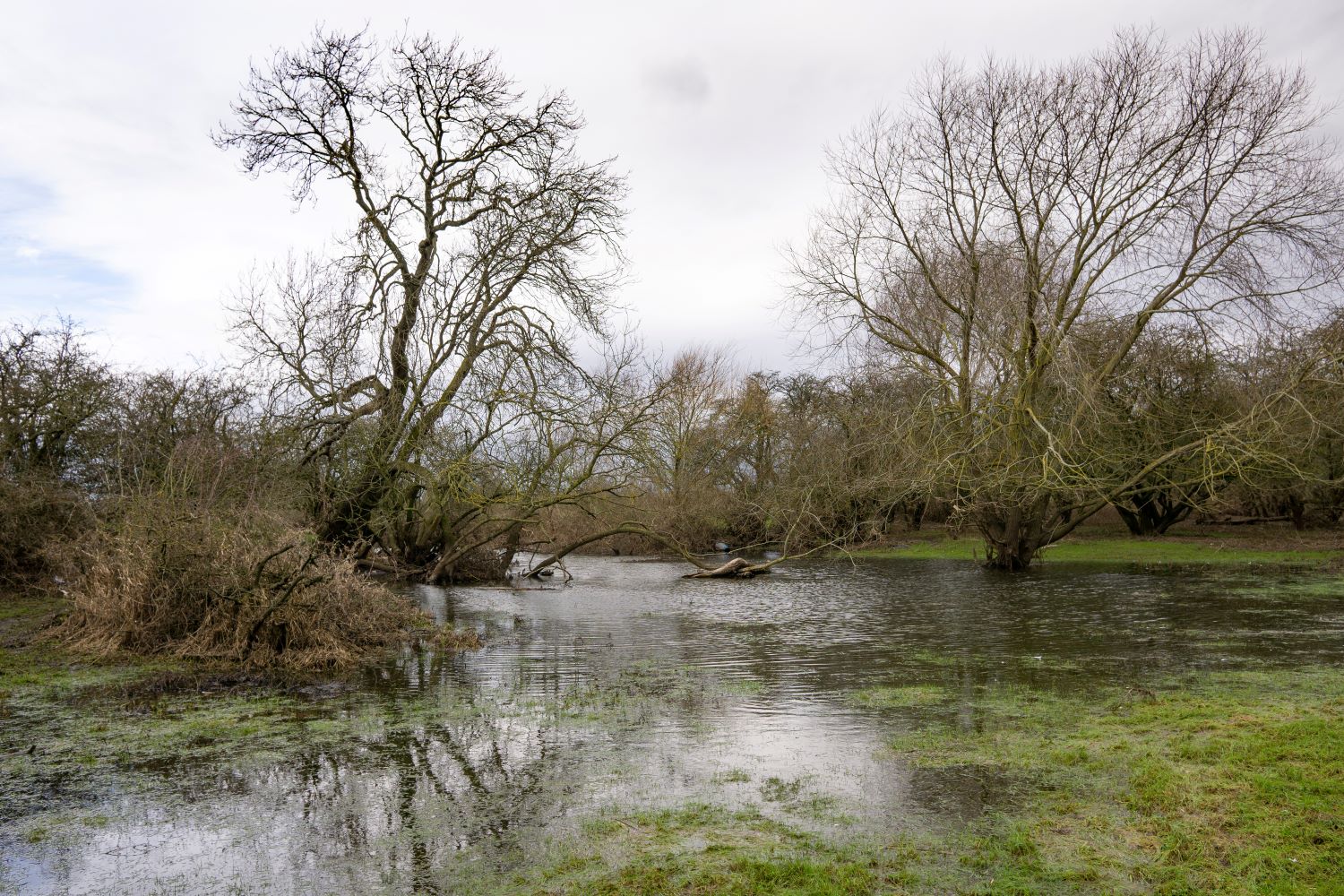Hot topics and trends for groundskeepers heading into 2024
Inside groundskeeping trends 2024
Though the year may be coming to an end, the groundskeeping calendar never stops. One of the key aspects of staying current is keeping a finger on the pulse of industry and groundskeeper trends. So what are the most pressing tasks and topics groundskeepers are currently talking about?

By looking into the most popular search terms, speaking to our contacts in the industry and tracking social media engagement, we’ve been able to pull together five subjects generating conversation in the industry.
Use of drones in grounds management
Drones have emerged as game-changers in the field of grounds maintenance, introducing a level of precision, efficiency, and foresight that was previously unimaginable. Equipped with state-of-the-art technology, these aerial devices can transform the way groundskeepers manage large landscapes and tackle routine maintenance tasks.
How groundskeepers can utilise new technology
Using drones for regular grounds maintenance may seem far-fetched for many groundskeepers, existing on the periphery of the industry and used by just a few.
In actuality, a survey by the Civil Aviation Authority this year found that commercial drone usage has increased considerably and is set to continue over the next two decades.
Modern drones are equipped with high-resolution cameras capable of capturing intricate details of the landscape below. This high-quality imaging allows groundskeepers to conduct thorough inspections without physically traversing the entire area. From identifying specific issues such as pest infestations or diseased vegetation to assessing the overall health of the landscape, drones provide an unprecedented level of detail that aids in making informed decisions.

Seasonal challenges
Autumn this year has broken into the top 10 of the wettest on record across all regions of the UK according to the Met Office, something groundskeepers have no doubt felt the impact of.
But it’s not just working conditions that have been affected by this wetter than usual weather. Increased rainfall and strong winds meant a deluge of leaf debris hit the ground in a soggy mass. As a result, leaf clearance this season is more essential than ever, and it’s more than likely leaves will be making their presence known all the way into late winter.
Why is leaf clearance important?
Leaf clearance in the colder seasons stands as a pivotal practice in maintaining the health and aesthetics of grounds. As autumn transitions into winter, deciduous trees shed their leaves, creating a dense carpet that, if left unattended, can have far-reaching consequences. The accumulation of fallen leaves impedes the penetration of sunlight, hindering the growth and vitality of grass and underlying vegetation. Additionally, a blanket of leaves creates a breeding ground for fungi and moulds, posing a threat to the health of the grass beneath.
They can also compromise the safety of outdoor spaces, especially in high traffic areas such as public parks and grounds. By prioritising thorough leaf clearance in winter, groundskeepers not only preserve the visual appeal of landscapes but also safeguard the ecological balance, mitigate safety risks, and uphold the overall functionality of outdoor spaces, ensuring they remain vibrant and resilient as they transition through the seasons.
How to keep on top of it
Having the right equipment is essential to keeping on top of this seasonal task, and with the volume of leaves we’re seeing this year, hand-held leaf blowers are no longer cutting it.
Instead groundskeepers are turning to more powerful models that can half the time needed to clear leaves off of grounds. The AgriMetal tractor-mounted blowers use an exclusive design that increases airflow CFM by around 25 percent compared to other blowers in the market, reaching a maximum of only 91 decibels too.
With three models, the AgriMetal B25, B35 and B50 can be attached to 25hp, 35hp and 50hp tractors at the PTO respectively.
Or if groundskeepers would rather work with just a single machine then the ProLine H800 mower and collection system can quickly clears away debris into a 214-gallon capacity system in one pass. Its cutting width of 50ins and Smart AirFlow system is also able to move clippings and debris from the cutting deck surface to the hopper to leave a clear path of grass in its wake.

Flooding and waterlogging
An increase in leaf debris isn’t the only challenge wetter weather can bring to landscapers.
Wet weather can quickly turn the ground into soft, muddy bogs, especially if the surfaces lack sufficient drainage. And with these conditions comes the risk of compaction.
Compaction reduces drainage and can see soil retaining too much water, causing mud and dead patches throughout grounds as roots become damaged beneath the surface – something that can continue to cause problems later down, making grounds more prone to drought.
Reducing waterlogging
Installing additional drainage is expensive with increased aggregate and material costs driving up prices. For many groundskeepers, installing new drainage is not always an affordable option. Aeration then is a key step in improving the speed of water movement away from surfaces and reducing soil compaction.
Deep-tine aeration in particular relieves soil compaction at lower soil levels than the typical process, creating channels through the root zone to allow oxygen, water and critical nutrients to penetrate deep into the soil profile.
With Toro’s ProCore SR Series deep-tine aerators, you can penetrate up to 16 inches below the surface. The robust machines from the range can break up soil on even the most compacted surfaces.
And with tractor-mounted variants there’s the potential to cover larger areas. The ProCore 1298 and ProCore 864 are up to 25 percent wider than other competitive units and cover more ground in less time for increased productivity. Width is key to enabling the machine to cover a lot of ground – up to 2.3 acres per hour is possible.
Sand topdressing after aeration can also be employed in waterlogged conditions. The topdressing can be worked into the soil through the holes left behind, firming up the surface and improving the soil’s drainage in the months to come.

Changes in snow patterns
The term El Niño is likely one that groundskeepers are all too familiar with by now, having caused havoc with the weather throughout 2023. Those working in outdoor industries were affected more than most, and it’s predicted that they’ll continue to see the effects of the weather phenomenon up until April.
Thanks to the jet stream impact of El Niño, both Europe and the UK are forecasted by Severe Weather Europe to be in for cold climates and more than just a simple snow season, with snow heading to parts of the UK earlier and in greater quantities than has been seen years past.
Prepare a snow removal plan
With that forecast in mind, it’s won’t be time wasted for groundspeople to prepare for what could be a season of increased snowfall by developing a snow removal plan that outlines responsibilities, priorities, and procedures should their area of the country be impacted.
This plan should cover clearing areas such as pathways, car parks, entrances and any other critical or high traffic outdoor areas and consider the size of the grounds and specific accessibility needs.
Stock up of snow removal equipment
Ensure that you and your groundskeeping team has access to the necessary snow removal equipment that has undergone preventative maintenance so you’re not caught short should a flurry arise.
Test and service snow blowers (or leaf blowers as they can work just as well), check the blades on snow ploughs, check de-icing spreaders and shovels. Regularly maintain and inspect this equipment to guarantee its functionality when needed.

Sustainable groundskeeping
With the way the world is going, and sustainability rising to the forefront of many industries, it’s no surprise that the grounds sector is following suit.
Sustainable groundskeeping involves adopting practices that minimise the environmental impact of outdoor maintenance while promoting long-term ecological health. The trend encompasses a range of initiatives, from the use of organic fertilisers to the incorporation of native plants that require less water and maintenance, to updating groundskeeping equipment to reduce your carbon footprint.
Electric grounds machinery
Technology has been rapidly advancing for the past few years with the advent of smart irrigation systems, automated mowing and perhaps most prominently, the development of electric machinery.
The use of electric greensmowers has been well received in the turfcare sector, with golf clubs and sports grounds praising machines such as the Toro eTriFlex 3370 for its emissions free operation, reduction in noise pollution and overall stellar performance when it comes to delivering a pristine finish.
It’s about time the grounds sector was given its own specifically designed eco-friendly mower. In steps the Toro Groundsmaster e3200. Coined the industry’s first all-electric out-front rotary mower, groundspeople can tackle those tougher grounds jobs while still actively taking steps to reduce their carbon footprint.
Looking ahead
Heading into the oncoming year and further still, there’s plenty of room for growth when it comes to advancing technology and best practices, and while groundskeepers will never be able to reply on the British weather they can certainly rely on on thing to stay the same and that’s the quality of Toro grounds machines and the backup provided my Reesink Turfcare.